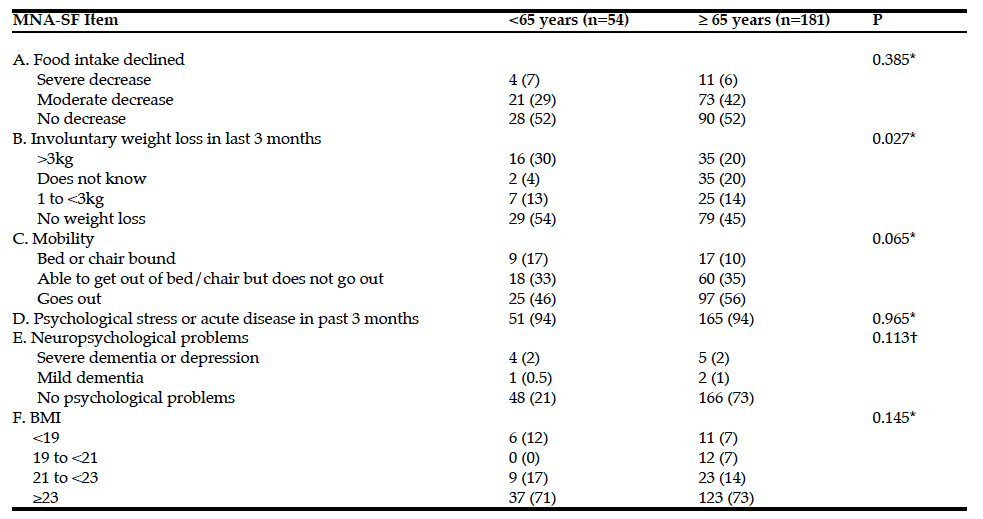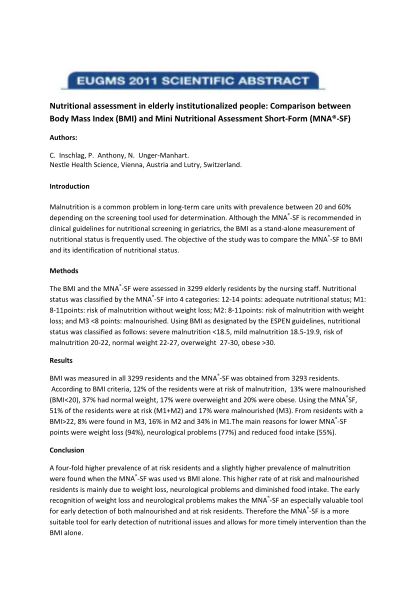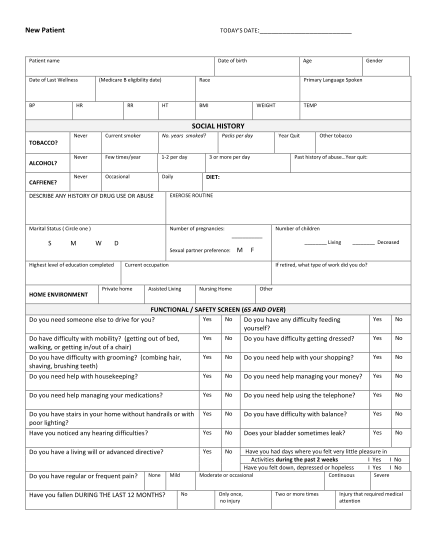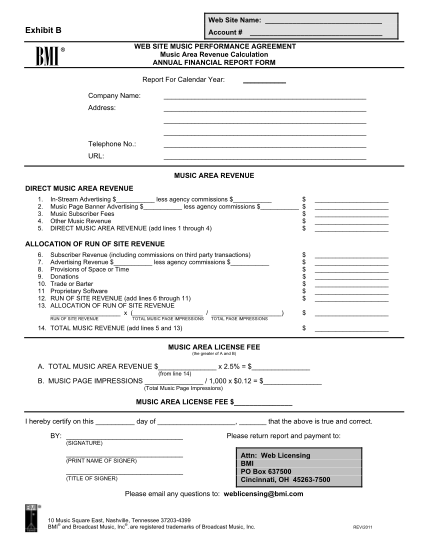Mna-sf calculator 169727
An investigation of quality improvement initiatives in decreasing the rate of avoidable 30day, skilled nursing facilitytohospital readmissions a systematic review Mileski M, Topinka JB, Lee K, Brooks M, McNeil C, Jackson J Clinical Interventions in Aging 17, Published Date 25 January 17A Document the persons anthropometric data and MNASF score b Determine and chart the person's nutritional status based on their MNASF score Evaluation 1 Review history and MNASF findings Note areas of concern 2 Compare the person's weight and height with ideal and usual weight 3 Review anthropometric data against normal measurements andA score of 12 to 14 indicates normal nutritional status, 8 to 11 indicates at risk
Clinicalnutritionespen Com Article S2405 4577 18 0 Pdf
Mna-sf calculator
Mna-sf calculator-A standardized CGA that included information on functional (Activities of Daily Living, ADL and InstrumentalADL), cognitive (Short Portable Mental Status Questionnaire), risk of pressure sore (ExtonSmith Scale), comorbidities (CIRS Index), medications, living status and nutritional status (MNA and MNASF) was used to calculate the MPI using a The MNASF includes only six items, but is quicker and as e ective as the long version If the total score is 11 points or less, the patient is considered at risk of malnutrition or malnourished and the full version (assessment) should be performed



Www Mna Elderly Com Forms Mna Guide English Sf Pdf
When the MNASF indicates malnutrition risk, the nurse should proceed with part 2 (questions G through R), and both the screening score and the malnutrition indicator score should be documented When the total score indicates the risk of malnutrition or malnutrition itself, the primary care provider and the dietitian should be notifiedThe MNASF can distinguish subjects well nourished (score of 12–14), requiring no further investigation from those at risk for malnutrition (score of 8–11), or malnourished (score less than 8), in which diagnostic confirmation by completing the full MNA is required (step 2—assessment), with a similar validity and accuracy of the full MNA In their study , of the five simple reliable nutritional tools (MNASF, NRS, MUST, MST and GNRI), GNRI was shown to be the most accurate in identifying haemodialysis patients at nutritional risk, because the area under the receiver operating characteristic curve generated with the malnutrition–inflammation score value was the largest
Kaiser MJ, Bauer JM, Ramsch C, Uter W, Guigoz Y, Cederholm T, et al Validation of the Mini Nutritional Assessment shortform (MNASF) a practical tool for identification of nutritional status The journal of nutrition, health & aging 09;Tions—also known as the MNA Short Form (MNASF)—can be completed in less than five minutes Part 1 is designed to detect "psychological stress or acute disease" or a decline in eating or weight in the past three months, as well as current mobility or neuropsychological problems and a decrease in body mass index (BMI)Nutritional Assessment (MNASF) J Geront 01;
In addition, MNASF is composed of some items based on memory, eg, decline in food intake in the past 3 months Therefore, in cases of patients with delirium and/or dementia, we asked the caregiver the relevant questions The MNASF scores were highly correlated with those of the original MNA in a previous study 223 Functional outcomes Nutritional assessment was carried out using the Mini Nutritional Assessment–Short Form (MNASF) according to which three categories are established malnutrition (0–7 points), risk of malnutrition (8–11 points) or no risk (12–14 points)Lastly, calculate the sum of these 2 numbers This is your SCREENING SCORE Write sum of questions AE (from page 1) Question F2 DO NOT ANSWER QUESTION F2 IF QUESTION F1 IS ALREADY COMPLETED Measure the circumference of your LEFT calf by following the instructions below 1 Loop a tape measure all the way around your calf to measure its size 2




Mini Nutritional Assessment Rehabmeasures Database



2
The main findings were that there was a 'moderate' agreement between 'MUST' and MNASF κ = 050, 95% CI (039, 060), that both 'MUST' and MNASF scores predicted mortality (p = 0013 and 0009 respectively), and that LOS increased progressively with MNASF category The Mini Nutritional Assessment Short Form (MNA®SF), which is a practical tool for identification of nutritional status 7, 8 Nutritional support should be considered for those With a BMI 10% over the previous 36 months With a BMI 5% over the previous 36 months The MNA and MNASF were found to be sensitive, specific, and accurate in identifying nutritional risk Reference Guigoz 16 Sieber et al demonstrated that, 15 years after its introduction, the MNA is the gold standard for nutritional assessment in ambulatory communityliving elderly people and those in longterm care facilities



Http Www Hkcnaltd Org Hk Info Mna Pdf




Evaluation Of The Efficacy Of Nutritional Screening Tools To Predict Malnutrition In The Elderly At A Geriatric Care Hospital Abstract Europe Pmc
The MNASF was found to be strongly associated with mortality in younger Ugandan adults (Reference Asiimwe 54), whereas a trend towards longer LOS and increased likelihood of readmission was observed in younger rehabilitation patients but the results failed to reach significance as the study was likely underpowered (Reference Wegener, James andMNASF investigates for malnutrition and undernutrition in elderly patients height can be alternately found by half armspan, demispan, knee height, BMI can be calculated by the calf circumference Know the 4 components of the Comprehensive Geriatric Assessment and review the most common tools to assess each area The Mini Nutritional Assessment (MNA) or its short form (MNASF) are used in eight articles (31–33, 35, 40, 43, 47, 48) The MNA and MNASF are validated tools developed by the International Association of Geriatrics and Gerontology




Evaluation Of The Efficacy Of Nutritional Screening Tools To Predict Malnutrition In The Elderly At A Geriatric Care Hospital Abstract Europe Pmc




The Mini Nutritional Assessment Mna And Its Use In Grading The Nutritional State Of Elderly Patients Sciencedirect
Your guess 10% 26% 45% Calculate risk › This index was developed in 8 patients in the geriatrics unit of an Italian hospital in 04 (mean age 79 years, 55% female, 18% 1year mortality) The index was internally validated in 857 patients in the geriatrics unit of an Italian hospital in 05 (mean age 78 years, 53% female, 17% 1year We derived the MNASF score from available data collected in the SLAS1 cohort as previously reported 10 The total weighted MNASF score ranges from 0 to 14;Aimed at providing the best care and support for people with complex health and social care needs, Proactive Care is a process whereby an individual's needs are assessed and evaluated, eligibility for service is determined, care plans are drafted and implemented, services are provided and needs are monitored and reassessed




Mna By Ukcdesign



Q Tbn And9gcry0bcfr3qe1e Xuzitzg4va Aoiiqcgxzvkqgqjco7lbxopqm8 Usqp Cau
The MNA ® is a validated nutrition screening and assessment tool that can identify geriatric patients age 65 and above who are malnourished or at risk of malnutrition The MNA ® was developed nearly years ago and is the most well validated nutrition screening tool for the elderly Originally comprised of 18 questions, the current MNA The MNASF allows for the substitution of BMI, if it cannot be obtained, with calf circumference without losing validity Each item of the MNASF is scored along a variable scale of 0 to 3 with total scores ranging from of 0 to 14 The assessment takes less than 10 minutes to complete with lower scores suggestive of poorer nutritional intake Where there is capacity, we recommend the use of a validated malnutrition screening tool to identify patients who are at risk of malnutrition (eg, MUST, MST, Mini Nutritional Assessment–Short Form MNASF) although coordination of direct patient care should be considered to minimise staff exposure and PPE use



Www Mna Elderly Com Forms Mna Guide English Sf Pdf



Research Vu Nl Ws Portalfiles Portal Validity Of Nutritional Screening Tools For Communitydwelling Older Adults A Systematic Review And Metaanalysis Pdf
When the MNASF indicates malnutrition risk, the nurse should proceed with part 2 (questions G through R), and both the screening score and the malnutrition indicator score should be documented When the total score indicates the risk of malnutrition or malnutrition itself, the primary care provider and the dietitian should be notified The MiniNutritional Assessment (MNA) is an 18item screening tool used to identify older adults (> 65 years) who are malnourished or at risk of malnutritionRubenstein et al (01) United States Elderly May be best used in community, subacute or residential aged care settings, rather than acute care 2 Recent intake • Need calculator to calculate BMI For more information about nutrition assessment, refer to the Evidence Based Practice Guidelines for the Nutritional Management




The Mini Nutritional Assessment Mna After Years Of Research And Clinical Practice Reviews In Clinical Gerontology Cambridge Core



Undernutrition In Fragility Hip Fracture Encyclopedia
Mini Nutritional Assessment MNA® Complete the screen by filling in the boxes with the appropriate numbers Total the numbers for the final screening score(MNA®SF) The MNA®SF was validated as a stand alone screening tool, based on the full MNA® The MNA®SF provides a simple and quick method of identifying elderly patients who are at risk for malnutrition, or who are already malnourished It identifies the risk of malnutrition before severe changes in weight or serum protein levels occurThe newly revised MNASF is a valid nutritional screening tool applicable to geriatric health care professionals with the option of using CC when BMI cannot be calculated This revised MNASF increases the applicability of this rapid screening tool in




Screening And Assessment Of Malnutrition Springerlink




Impact And Clinical Implications Of The Cognitive Function And Nutritional Assessment At Admission On Hospital Outcomes And Mortality In Acutely Ill Geriatric Patients Research Square
Discrimination This risk calculator sorts patients who died from patients who lived correctly 71% of the time (cstatistic, 95% CI, ) Calibration The model was well calibrated across all risk levels, with less than 3% difference between estimated and actual mortality ratesNote In Australia and New Zealand other screening tools may be used such as Malnutrition Screening Tool (MST) or the Mini Nutritional Assessment Short Form (MNASF) References 1J Nutr Health Aging 06;




Calculation Of The Multidimensional Prognostic Index Mpi Download Table




Impact And Clinical Implications Of The Cognitive Function And Nutritional Assessment At Admission On Hospital Outcomes And Mortality In Acutely Ill Geriatric Patients Research Square
Abstract Objectives To identify the nutritional status of younger patients on admission to rehabilitation using the Mini Nutritional Assessment – Short Form (MNASF) and determine whether the MNASF has predictive validity for clinical outcomes in this setting Design Retrospective case note audit Setting Rehabilitation Unit, Repatriation General Hospital, Adelaïde, AustraliaKaiser MJ, Bauer JM, Ramsch C, et al Validation of the Mini Nutritional Assessment ShortForm (MNA®SF) A practical tool for identificationThe MNA®SF is a screening tool to help identify elderly patients who are malnourished or at risk of malnutrition This User Guide will assist you in completing the MNA®SF accurately and consistently It explains each question and how to assign and interpret the score



Www Mna Elderly Com Publications 415 Pdf



Www Jhltonline Org Article S1053 2498 17 9 Pdf
Validation of a modifiedmultidimensional prognostic index (mMPI) including the mini nutritional assessment shortform (MNASF) for the prediction of oneyear mortality in The MNASF has been recommended for use by the European Society of Parenteral and Enteral Nutrition guidelines to detect the risk of undernutrition among the elderly The MNA has 2 procedures ( 18 ) the MNASF is used to screen for risk of malnutrition ( 13 ), and the full MNA is used to assess nutritional status Controlling Nutritional Status (CONUT) score is calculated using laboratory values, including serum albumin, total cholesterol concentration, and total lymphocyte count;



Naso And Oropharyngeal Bacterial Carriage In Nursing Home Residents Impact Of Multimorbidity And Functional Impairment




Pdf Beyond Malnutrition Screening Appropriate Methods To Guide Nutrition Care For Aged Care Residents Merrilyn Banks Academia Edu
Nutritional Assessment (MNASF) J Geront 01;56A M Guigoz Y The MiniNutritional Assessment (MNA ®) Review of the Literature What does it tell us?Body Mass Index calculator 2 min MNASF 113 KB Mini Nutritional Assessment Short Form Identify individuals age 65 and above who are malnourished or at risk of malnutrition 10 min MUST 873KB Malnutrition Universal Screening ToolIt is reportedly valuable for making nutritional assessments One advantage of CONUT score over other nutritional assessments is that it can be calculated retrospectively using only objective




Diet Quality In Relation To Healthy Ageing The Israeli Longitudinal Study On Aging Ilsa A Study Protocol Bmj Open




An Evaluation Of The Validity Of Nutrition Screening And Assessment Tools In Patients Admitted To A Vascular Surgery Unit British Journal Of Nutrition Cambridge Core
56A M 3 Guigoz Y The MiniNutritional Assessment (MNA13 (9)7–8 Google Scholar




A Review Of Nutrition Screening Tools Used To Assess The Malnutrition Sarcopenia Syndrome Mss In The Older Adult Clinical Nutrition Espen




Nutrition Screening Mna Elderly




Pdf Short Form Of The Mini Nutritional Assessment Is A Better Proxy For Nutritional Status In Elderly Than The Body Mass Index Cross Sectional Study




Analysis Of Different Mini Nutritional Assessment Mna And Geriatric Download Table




Mini Nutritional Assessment Short Form Body Mass Index Malnutrition



Www Mna Elderly Com Forms Mna Guide English Sf Pdf




Preoperative Assessment Of The Older Surgical Patient Honing In On Ge Cia




Scoring Methods Used In The Dietary Variety Score Survey To Predict Malnutrition Among Older Patients Receiving Home Care Yamamoto International Journal Of Older People Nursing Wiley Online Library




Predictive Validity Of Malnutrition Universal Screening Tool Must And Short Form Mini Nutritional Assessment Mna Sf In Terms Of Survival And Length Of Hospital Stay Sciencedirect




Does The Mini Nutritional Assessment Short Form Predict Clinical Outcomes In Younger Rehabilitation Patients Jarlife



1




Mna By Ukcdesign



Www Mdpi Com 1660 4601 18 5 2772 Pdf



Clinicalnutritionespen Com Article S2405 4577 18 0 Pdf




Pdf Prognostic Index M Mpi Including The Mini Nutritional Assessment Short Form Mna Sf For The Prediction Of One Year Mortality In Hospitalized Elderly Patients



Www Mna Elderly Com Forms Mna Guide English Sf Pdf




The Nestle Nutrition Institute Mna Users Guide Pdf Giic




Validity And Reliability Of The New Canadian Nutrition Screening Tool In The Real World Hospital Setting European Journal Of Clinical Nutrition




The Relation Of Mini Nutritional Screening Score Subjective




Controlling Nutritional Status Score Predicts Postoperative Complications After Hip Fracture Surgery Springerlink




76 Bmi Calculator Kg Page 4 Free To Edit Download Print Cocodoc




Nutrients Free Full Text Changes In Nutritional Status And Musculoskeletal Health In A Geriatric Post Fall Care Plan Setting Html




Guide To Completing The Mini Nutritional Mini Nutritional Assessment Short Form Mna Sf The Mna Sf Is A Screening Tool To Help Identify Elderly Patients Who Are Malnourished Or Pdf Document



Www Mna Elderly Com Forms Mna Guide English Sf Pdf




Nutrients Free Full Text Nutritional Risk Screening Tools For Older Adults With Covid 19 A Systematic Review Html




76 Bmi Calculator Kg Page 4 Free To Edit Download Print Cocodoc




Pdf Validation Of A Modified Multidimensional Prognostic Index M Mpi Including The Mini Nutritional Assessment Short Form Mna Sf For The Prediction Of One Year Mortality In Hospitalized Elderly Patients Marilisa Franceschi Academia Edu




The Relation Of Mini Nutritional Screening Score Subjective




76 Bmi Calculator Kg Page 4 Free To Edit Download Print Cocodoc




Does The Mini Nutritional Assessment Short Form Predict Clinical Outcomes In Younger Rehabilitation Patients Jarlife




Prediction Of 5 Year Mortality Risk By Malnutrition According To The Glim Format Using Seven Pragmatic Approaches To Define The Criterion Of Loss Of Muscle Mass Clinical Nutrition




An Evaluation Of The Validity Of Nutrition Screening And Assessment Tools In Patients Admitted To A Vascular Surgery Unit British Journal Of Nutrition Cambridge Core




Geriatric Nutrition Risk Index Is Comparable To The Mini Nutritional Assessment For Assessing Nutritional Status In Elderly Hospitalized Patients Clinical Nutrition Espen



Clinicalsocialwork Eu Wp Content Uploads 09 01 Bartosovic Pdf




The Relation Of Mini Nutritional Screening Score Subjective



Topic 3 Nutritional Assessment And Techniques Module 3 1 Nutritional Screening And Assessment Printable Version Remy Meier Md University Of Basel Breinlichenstrasse 14 4416 Bubendorf Switzerland Yitshal Berner Md Geriatric Medicine Meir




A Prospective Nutritional Assessment Using Mini Nutritional Assessment Short Form Among Patients With Head And Neck Cancer Receiving Concurrent Chemoradiotherapy Springerlink




Pre Fracture Nutritional Status Is Predictive Of Functional Status At Discharge During The Acute Phase With Hip Fracture Patients A Multicenter Prospective Cohort Study Clinical Nutrition




Impact And Clinical Implications Of The Cognitive Function And Nutritional Assessment At Admission On Hospital Outcomes And Mortality In Acutely Ill Geriatric Patients Research Square




Nutrients Special Issue Nutritional Status Of Older Adults




Comprehensive Geriatric Assessment In Older Adults With Cancer Recommendations By The Italian Society Of Geriatrics And Gerontology Sigg Fusco 21 European Journal Of Clinical Investigation Wiley Online Library



Www Mna Elderly Com Forms Mna Guide English Sf Pdf



Http Www Swrwoundcareprogram Ca Uploads Contentdocuments Hcpr mna guide Pdf




Evaluation Of The Efficacy Of Nutritional Screening Tools To Predict Malnutrition In The Elderly At A Geriatric Care Hospital



Www Mna Elderly Com Forms Mna Guide English Sf Pdf




The Mini Nutritional Assessment Mna After Years Of Research And Clinical Practice Pdf Document



Http Ijhrmlp Org Pdfs 65 Pdf




Nutrition Assessment And Therapy Springerlink




The Mini Nutritional Assessment Mna After Years Of Research And Clinical Practice Pdf Document




Malnutrition In The Elderly Underrecognized And Increasing In Prevalence Page 2 Of 3 Clinical Advisor




Mini Nutritional Assessment Short Form Mna Sf Fill Online Printable Fillable Blank Pdffiller




Pdf Screening For Undernutrition In Geriatric Practice Developing The Short Form Mini Nutritional Assessment Mna Sf




Nutrients Free Full Text Nutritional Risk Screening Tools For Older Adults With Covid 19 A Systematic Review Html




Analysis Of Different Mini Nutritional Assessment Mna And Geriatric Download Table




Iladrwqxxvtymm




The Consequences Of Malnutrition Following Discharge From Rehabilitation To The Community A Systematic Review Of Current Evidence In Older Adults Marshall 14 Journal Of Human Nutrition And Dietetics Wiley Online Library




The Nestle Nutrition Institute Mna Users Guide Pdf Giic




Top Pdf Mna Score 1library




The Mini Nutritional Assessment Mna After Years Of Research And Clinical Practice Reviews In Clinical Gerontology Cambridge Core



Q Tbn And9gcry0bcfr3qe1e Xuzitzg4va Aoiiqcgxzvkqgqjco7lbxopqm8 Usqp Cau




Malnutrition And Mortality In Frail And Non Frail Older Adults Undergoing Aortic Valve Replacement Circulation




Geriatric Nutrition Risk Index Is Comparable To The Mini Nutritional Assessment For Assessing Nutritional Status In Elderly Hospitalized Patients Clinical Nutrition Espen




To Evaluate The Nutritional Status Of Patients With Diabetes Mellitus Type 2 In Out Patient Department Of A Multi Specialty Hospital In Mumbai Using Malnutrition Universal Screening Tool Assessment Score Ijnmhs




The Mini Nutritional Assessment Mna After Years Of Research And Clinical Practice Reviews In Clinical Gerontology Cambridge Core




If Calculator Pdf Body Mass Index Determinants Of Health




Recommendations Of The Scientific Group Of Malnutrition Experts Advising On Belgium S National Food And Health Plan 1 Pdf Free Download




Evaluation Of The Efficacy Of Six Nutritional Screening Tools To Predict Malnutrition In The Elderly Clinical Nutrition




Prevalence Of Hospital Malnutrition Among Cardiac Patients Results From Six Nutrition Screening Tools Topic Of Research Paper In Health Sciences Download Scholarly Article Pdf And Read For Free On Cyberleninka Open




Nutritional Status In Older Persons According To Healthcare Setting A Systematic Review And Meta Analysis Of Prevalence Data Using Mna Clinical Nutrition




Mna By Ukcdesign




Supplemental Materials For Elderly Nutritional Indicators For Geriatric Malnutrition Assessment Enigma Development And Validation Of A Nutritional Prognostic Index Clinical Nutrition Espen




Nndgj8yfko6tbm



2



3




Mna Cc Mac And Nutritional Status Parameters Download Table



2




Evaluation Of The Efficacy Of Nutritional Screening Tools To Predict Malnutrition In The Elderly At A Geriatric Care Hospital Abstract Europe Pmc




Geriatric Nutritional Risk Index As A Simple Tool For Assessment Of Malnutrition Among Geriatrics In Northwest Of Iran Comparison With Mini Nutritional Assessment Springerlink




Supplemental Materials For Association Between Separate Items Of The Mini Nutritional Assessment Instrument And Mortality Among Older Adults A Prospective Cohort Study Introducing A Trimmed Mna Version Clinical Nutrition



Www Mna Elderly Com Forms Mna Guide English Pdf




Effect Of Risk Of Malnutrition On 30 Day Mortality Among Older Patients With Acute Heart Failure In Emergency Departments European Journal Of Internal Medicine




Does The Mini Nutritional Assessment Short Form Predict Clinical Outcomes In Younger Rehabilitation Patients Jarlife


コメント
コメントを投稿